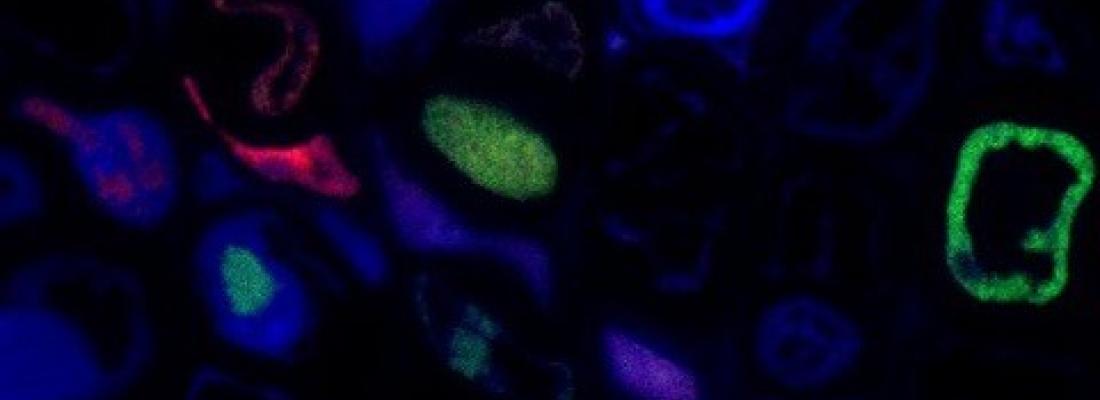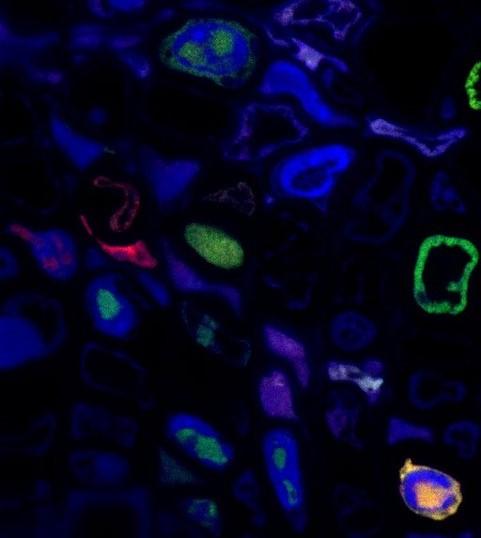Food, Global Health Reading time 3 min
The secret multicellular lives of viruses
Published on 22 March 2019

Multipartite1viruses are poorly understood even though they represent nearly 40% of the virus families and genera observed in plants. Researchers from INRA, CIRAD, and CNRS carried out a study on the faba bean necrotic stunt virus (FBNSV), a multipartite virus in plants that causes severe infections in legumes. Its genome has eight different segments, which are each enclosed in different capsids. The scientists explored the virus’s mechanism of infection by using florescence microscopy to look for the different genomic segments in plant cells. They showed that the segments could occur in distinct cells but still work together to cause infection. The study's results are highly novel because it has always been assumed that the genomic segments of a multipartite virus needed to co-occur within a single cell.
Independent accumulation of genomic segments in different cells

The initial results suggested that the virus could still function even if its segments were found in different cells. To go further, the researchers labelled the genomic segments with fluorescent tags (red and green) and then quantified their fluorescence levels. They were thus able to estimate segment quantities in different cells and show that the segments accumulated completely independently, regardless of infection stage.
Functional virus—multicellular distribution
To test whether a viral gene's function could still be present in a cell from which the gene itself was absent, the researchers focused on replication, a function encoded by the R segment. They specifically looked at cells in which another segment, the S segment, was replicated, providing evidence that the replication function was present. The goal was to determine whether these cells also contained the R segment and/or the replication protein that it encodes, M-Rep. The researchers showed that, although the R segment was only found in about 40% of the cells, the M-Rep protein was found in 85% of the cells. This discovery indicates that M-Rep is present in cells that do not contain the R segment and thus suggests that M-Rep and/or its messenger RNA can travel among cells. The researchers have therefore shown that viral genes can occur in different cells yet still "coordinate" at the intercellular level to ensure virus functionality.
This unique lifestyle, never before seen in the world of virology, should inspire novel avenues of research in the field. Indeed, it is likely that multipartite viruses are widespread, and it should now be explored whether they too have secret multicellular lives.
1 Multipartite viruses have genetic material (DNA or RNA) composed of several segments that are each enclosed in a protein capsule called a capsid. There are two other general categories of viruses: monopartite viruses like polio, HIV, or Ebola, whose one genetic segment occurs in a single capsid, and segmented viruses like influenza, which have several genetic segments in a single capsid.
Anne Sicard, Elodie Pirolles, Romain Gallet, Marie-Stéphanie Vernerey, Michel Yvon, Cica Urbino, Michel Peterschmitt, Serafin Gutierrez, Yannis Michalakis and Stéphane Blanc A multicellular way of life for a multipartite virus
eLife DOI: 10.7554/eLife.43599
